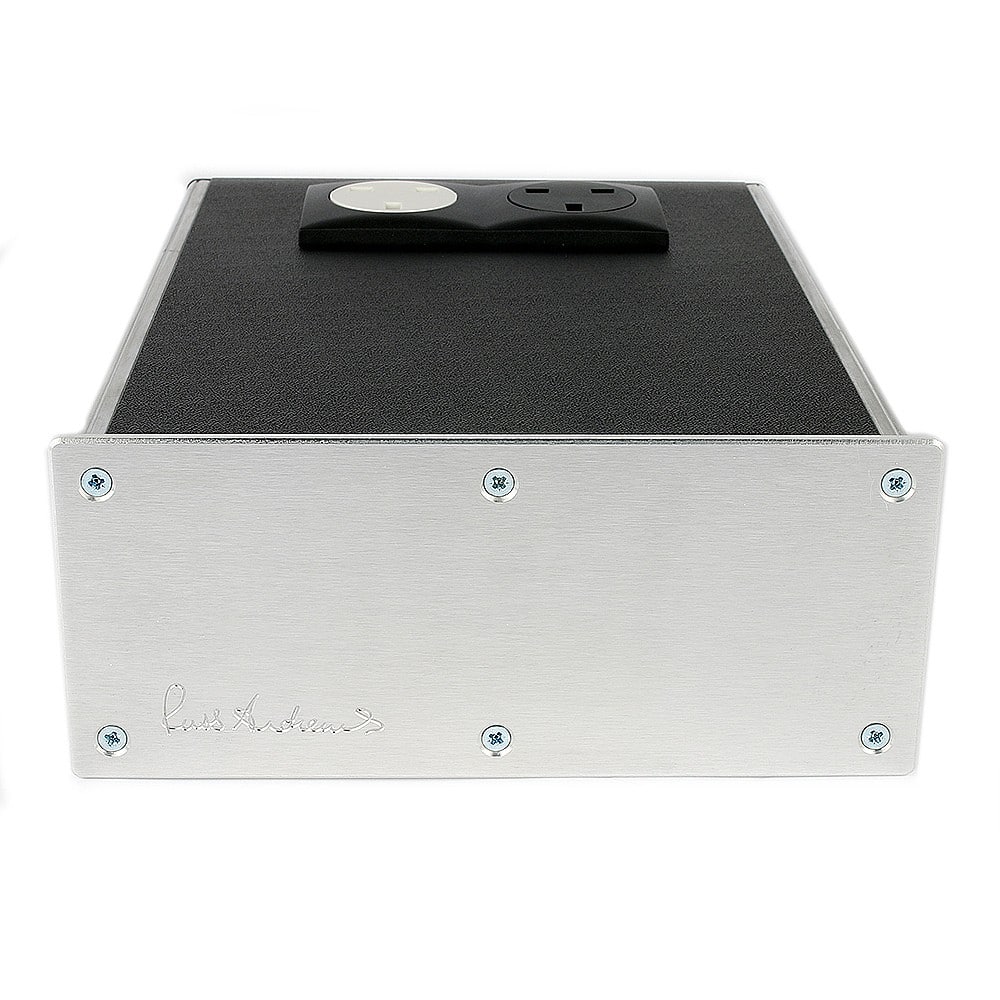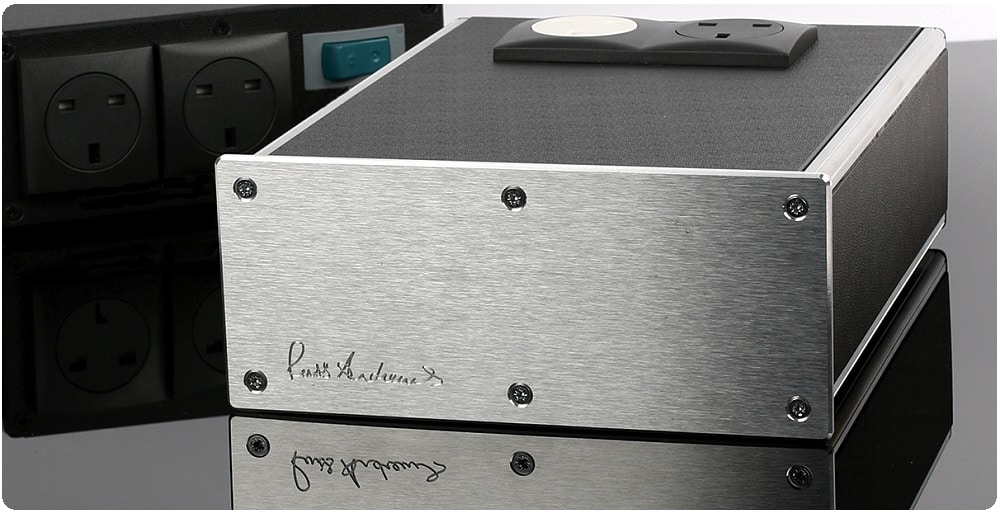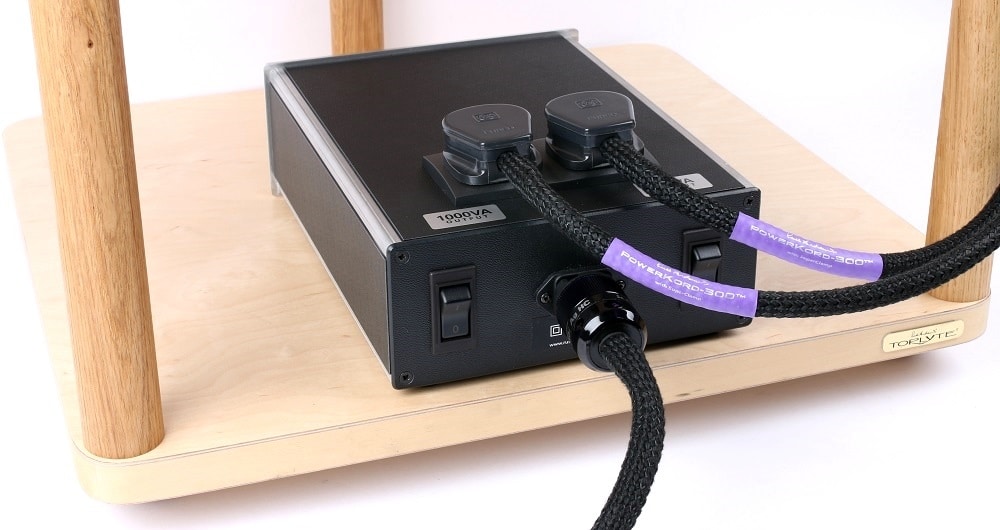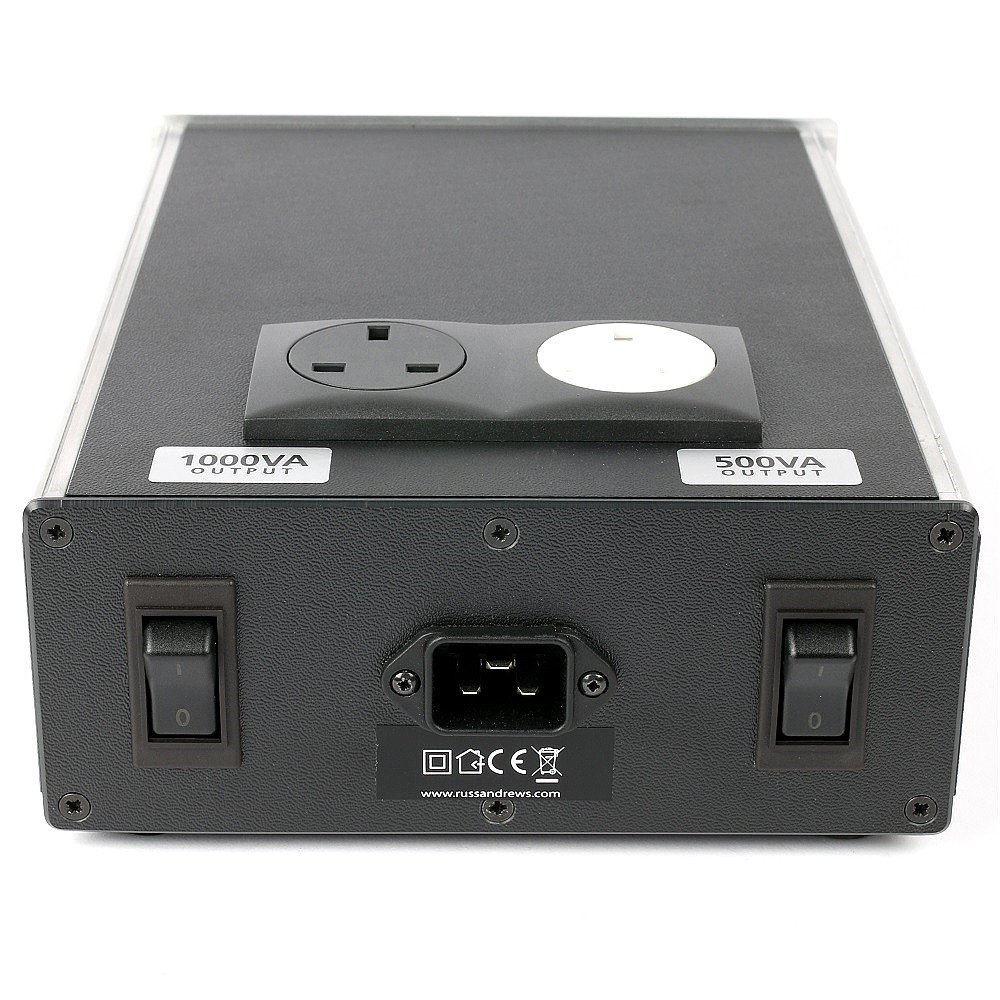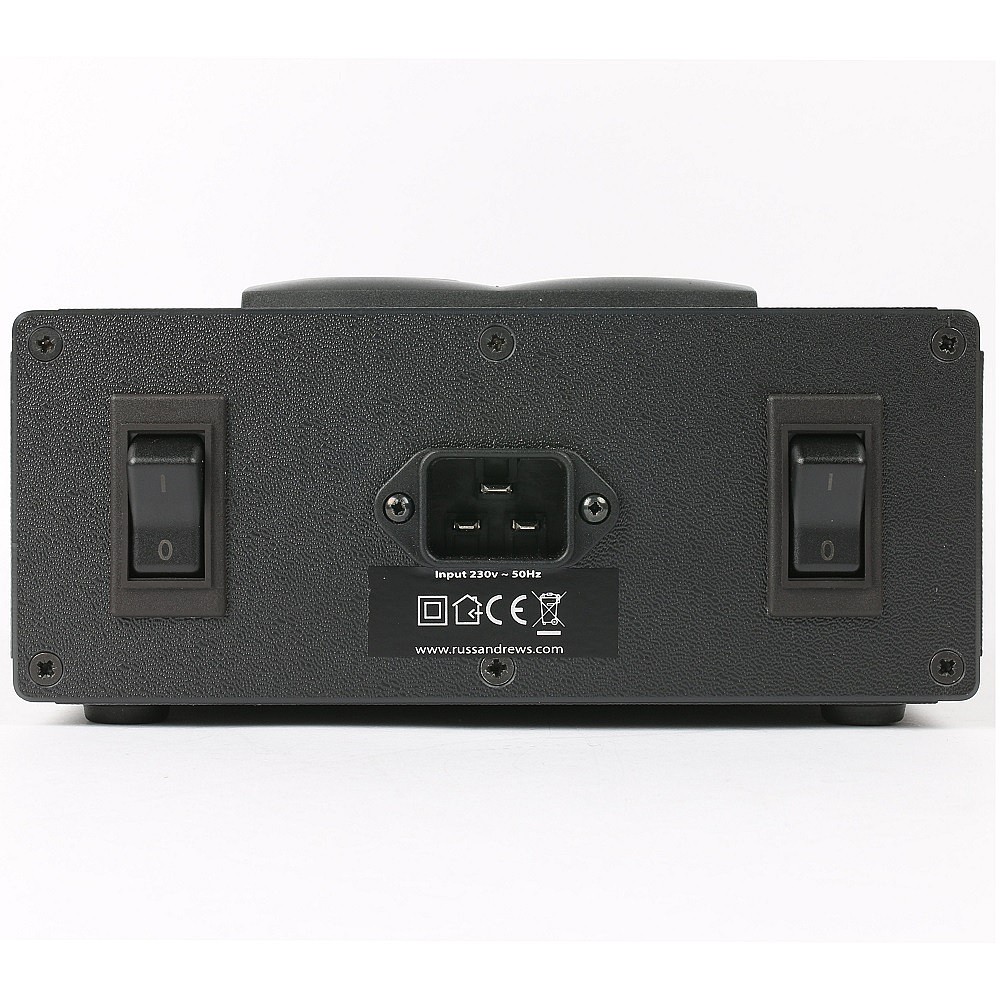The Article
Russ Andrews Balanced Mains Unit 1500: Do as the Studios do
13th May 2017
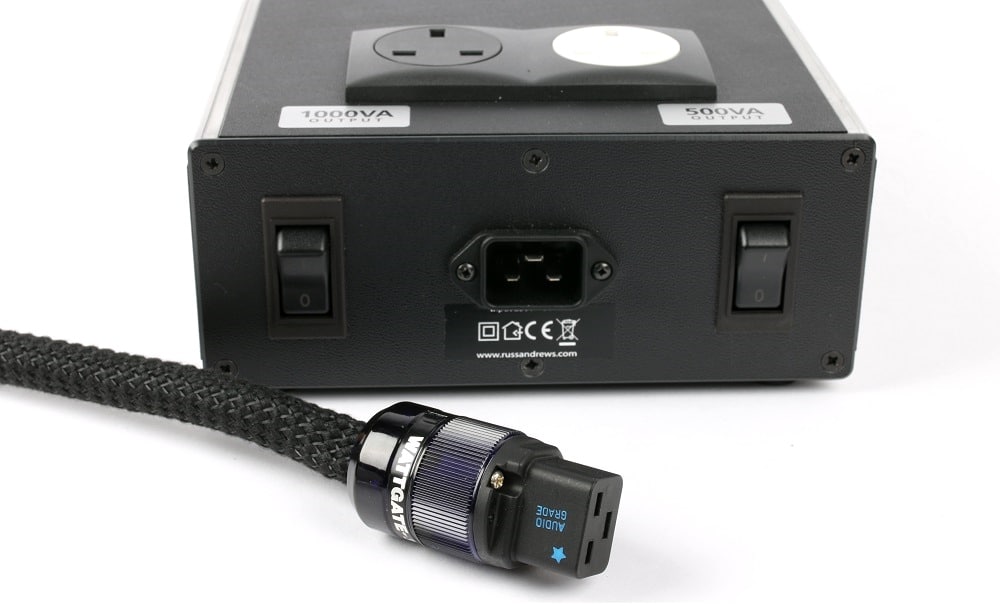
Promising to reduce main noise and improve overall sound quality, Paul Rigby reviews the Russ Andrews Balanced Mains Unit 1500
Mains electricity: it works, so what’s all the fuss about? Yes it works. It powers your washing machine, your fridge and is part of a team of tools that creates a perfect cup of tea. It also powers your hi-fi too, of course. The thing is, mains electricity supplies, cables and the rest ‘do the job’ and no more. This means that screening and noise suppression are sufficient in terms of safety and the like but they do not protect against noise pollution. Why should they?
And what sort of noise am I talking about? Everything from lighting equipment, to motors, to the controllers of those motors and a whole lot more. Noise emerges from your mains but most houses actually push noise back down the mains as well. Hence, you can often receive noise from your next door neighbour because of what they’re doing over there.
This unwanted noise not only appears on the live wire but is also present on the neutral line which is remotely connected to earth.
I was recently chatting to Airline Transformers, an independent UK manufacturer of toroidal transformers since 1982 who supply units to the likes of the BBC, Mitsubishi, General Electric, Dyson and Peavey in the USA. They stated that, “Most mains powered audio equipment incorporate power supplies to convert the mains AC supply to DC voltages. Unfortunately these are not 100% efficient and some of the wasted power is repelled back into the mains supply as reactive power. Some of these reactive components end up on the earth line and ultimately the earthing points, earthed cable shields and the equipment chassis. This means that these earth points are no longer truly at 0V potential but have a superimposed electrical noise which is highly undesirable as most audio and video signals are referenced to earth.”
For the balanced power supply, then, “The output from a balanced power supply consists of two anti-phase 115V voltages which have been found to reduce radiated field from power cords. Any (common-mode) reactive currents are…inversely phased. At the central earth point these equal and opposite currents meet and cancel each other out, they are not superimposed on the earth.”
This is why balanced mains units are so common in recording studios such as Abbey Road, for example. In fact, walk into any decent recording studio and this is how it will be powered.
So to Russ Andrews’ review sample which is not, as you might think, wholly produced ‘in house’. Russ Andrews might have its label stuck on the front but the unit has been built for it by, “…a specialist UK transformer manufacturer…”
The balanced mains transformers for the BMU 1500 are individually wound on an oversize silicon steel core. Each transformer is made with Russ Andrews’ own SuperSilent technology, there’s internal wiring sourced from the US-based outfit, Kimber plus external Russ Andrews UltraSocket mains outlets are used into the chassis, reducing noise further.
You’ll notice two output sockets – one rated at 1000VA and one rated at 500VA – fed by a 1500VA transformer and each with its own power switch. This means that you can connect a medium-powered power amp or integrated amp into the 1000VA output, leaving the 500VA output for your preamp and sources.
The custom-designed ABS box with brushed aluminium panel chassis is a backed by a 16A IEC mains socket. Internal jumpers allow matching to your supply voltage too. Spanning 210 x 90 x 290mm, the box weighs in at a surprisingly heavy 11.5kg. I remember picking one up for the first time and totally misjudging the ratio of chassis size/perceived weight and the actual weight. So that, when I initially went to pick it up, nothing happened. Be prepared and don’t strain yourself.
For protection, the BMU1500 is fitted with an internal, re-settable thermal breaker and integrated Magnetic Circuit Breakers in the on/off switches while, in use, you can either plug your components directly into the chassis or the mains extension supplying your system to the Balanced Mains Unit’s outputs.
SOUND QUALITY
I began with a basic, default setting for a mains set-up of CD player (plus a DAC hanging off the CD transport, in my case), amplifier and speakers with a cheap and nasty mains connected to a basic power block extension. The type you may use for general power duties in your house.
I began the test playing Earth, Wind & Fire’s Let’s Groove and, to begin, transferred the Parasound Halo amplifier from the bog standard power block to the balanced mains.
I was dumbfounded, initially. I really didn’t expect to hear it. The balanced mains basically took hold of the entire soundstage: the size, how it was structured, how the performers were ordered within it, scrunched it up into a little ball, threw that into the bin and completely remade a brand new one for me to listen to. The difference began in the first few seconds of the track that featured tinkly bells and other fragile percussion. I’ve never heard this sequence so clearly and with such focused precision. It was nigh on incredible just how detailed these first few seconds were. From that point on, the noise dropped like a stone from the soundstage and the vocals, now repositioned into different locations, assumed a new confidence, adding a textural quality that introduced a swathe of nuances to the delivery, giving the music a richness that was just not there beforehand.
The lower frequencies were just as impressive. Solid but not overpowering. Strong but not dominating. Confident but not boomy. Bass sounded naturalistic and characterful. Finally? Lots of new instruments appeared from nowhere, a strumming electric guitar, percussive additions and was that a cabasa? And all this from plugging in only the amplifier?
I then plugged in the CD player and played The Righteous Brothers’ Unchained Melody. Hence, both the amp and CD player were running off the balanced mains.
The sound moved onwards again, up to a another whole new level. Impressed? Stunned more like. More noise left the soundstage but an extra element entered the equation. I can only describe it as a sort of maturity. It was as if the music had grown up. That was it. This sounded like ‘grown-up music’. There was a richness, a full and elegant nature to the sound which seemed to expand laterally while each ingredient of the mix seemed to better integrate with each other to produce an improved overall presentation. The arrangement made more sense now, adding a 3D effect to the stereo image. If only there were more sockets available on this one unit!
I then connected the balanced mains-powered CD/DAC to my larger, valve-based reference system (which was not balanced mains powered): Icon Audio monoblocks, noise removing Vertex AQ support system…the lot. The sound only improved further. There was no sound improvement ceiling here. The music smoothed into something nigh on silky with those once elusive support instruments given further prominence and pushed further forward into the mix while bass was pushed back into the mix, better integrating with the rest of the arrangement without losing any of its power and significance.
Now, for the first time, I understood why studios are so into balanced mains supplies.
CONCLUSION
How to re-write your hi-fi experience? Buy yourself a balanced mains supply. There is more than space and air in the soundstage, it’s more than low noise and it’s more than clarity and tonal realism, it’s a whole new way of looking at your music. It’s a sonic improvement of Biblical proportions. It’s that good. Me? I’ve decided that all of my hi-fi will, from now on, be balanced mains powered. Time to start saving.
RUSS ANDREWS BMU 1500 BALANCED MAINS UNIT, UK SOCKETS
Price: £1,999
Website: www.russandrews.com
Tel: 01539 797300
GOOD: incredible sonic maturity, low noise, re-programs your soundstage, immense clarity, transparency
BAD: only two sockets available
RATING: 9
REFERENCE SYSTEM USED
Origin Live Sovereign turntable
Origin Live Enterprise 12” arm
Transfiguration Proteus cartridge
Leema Antila IIS ECO CD player
Benchmark DAC2 HGC
Icon Audio PS3 phonostage
Parasound Halo integrated amplifier
Aesthetix Calypso pre-amp
Icon Audio MB845 Mk.II monoblock power amplifiers
Quad ESL-57 speakers with One Thing upgrade
Vertex AQ/Tellurium Q cabling
Harmonic Resolution Systems Noise Reduction Components

